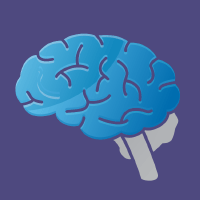Topic Menu
► Topic MenuTopic Editors


Understanding Scientific Creativity
Topic Information
Dear Colleagues,
Creativity is the foundation of human civilizations, and all progress and innovation depend on the ability of humans to create new things. While some researchers hold that creativity is domain-general, some other researchers have also hold that creativity is domain-specific (Baer, 1991; Han, 2003; Kaufman and Baer, 2008). Scientific creativity is a very important domain, and many studies focus on this topic. Researchers who study scientific creativity or any related research relevant to this topic are encouraged to submit a manuscript to this collection. This collection is not limited to empirical studies, we also welcome literature review and theoretical papers. Topics of interest to this Special Issue include but are not limited to the following:
- Review and theoretical papers relevant to the scientific creativity, or relevant to domain-general and domain-specific approaches to creativity;
- Studies attempting to develop measurements of scientific creativity;
- The genetic basis and cognitive neural mechanism of scientific creativity or artistic creativity;
- Education and scientific creativity. Study designs to improve studies’ scientific creative problem solving or scientific creativity;
- The development of scientific creativity or scientific learning of adolescents.
Please note that the Section “Planned Papers” on the webpage does not imply that these papers will eventually be accepted; all manuscripts will be subject to the journal’s normal and rigorous peer review process.
Dr. Wenjing Yang
Dr. Baoguo Shi
Prof. Dr. Jiang Qiu
Topic Editors
Participating Journals
| Journal Name | Impact Factor | CiteScore | Launched Year | First Decision (median) | APC |
|---|---|---|---|---|---|

Behavioral Sciences
|
2.5 | 2.6 | 2011 | 27 Days | CHF 2200 |

Education Sciences
|
2.5 | 4.8 | 2011 | 26.8 Days | CHF 1800 |

European Journal of Investigation in Health, Psychology and Education
|
3.0 | 4.4 | 2011 | 28.4 Days | CHF 1400 |

Journal of Intelligence
|
2.8 | 2.8 | 2013 | 36.5 Days | CHF 2600 |

MDPI Topics is cooperating with Preprints.org and has built a direct connection between MDPI journals and Preprints.org. Authors are encouraged to enjoy the benefits by posting a preprint at Preprints.org prior to publication:
- Immediately share your ideas ahead of publication and establish your research priority;
- Protect your idea from being stolen with this time-stamped preprint article;
- Enhance the exposure and impact of your research;
- Receive feedback from your peers in advance;
- Have it indexed in Web of Science (Preprint Citation Index), Google Scholar, Crossref, SHARE, PrePubMed, Scilit and Europe PMC.

